The first picture book I pick up is rarely nonfiction, whether science, history, biography, nature, whatever. But when I DO pick up a nonfiction picture book, I am usually fascinated.
Which kind of makes sense. In high school I avoided classes like history and science because I thought they were boring. The one exception was Ornithology in my junior and senior years. Who knew it would start a lifetime interest in birds? I was fortunate enough to attend a school that would even offer a class like this, and for it to be taught by a man who infused in me a true sense of curiosity, concern, and awe about the natural world.
Today when I’m exposed to some unfamiliar subject it can generate interest, curiosity. It can fascinate.
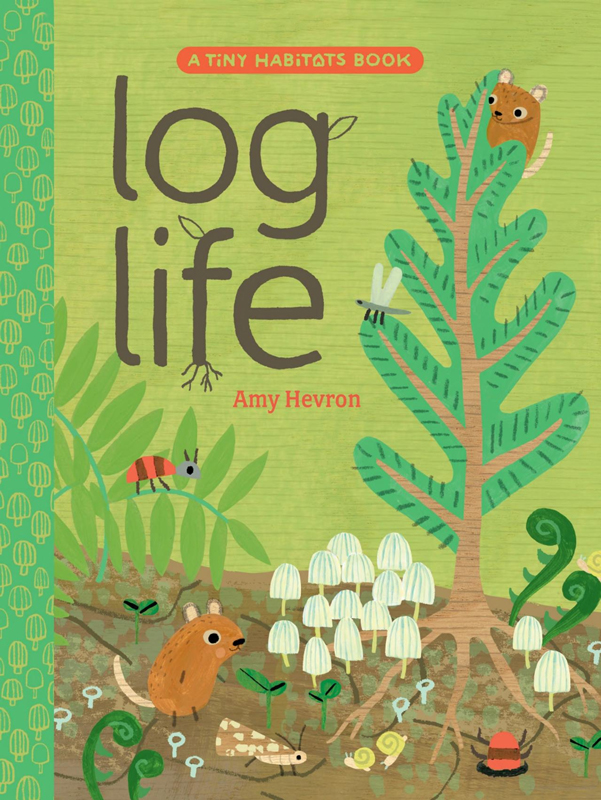
Log Life, the new book by Amy Hevron, is full of fascinating things. Things I may have known in some sense or another, but still made me go, “OH!” and marvel at those things I did not know before.
To create a picture book that spans 1000 years in 32 pages, and to do so effectively is something worth noting. Log Life is the story of a fallen tree. A tree that will lay on the forest floor as other forms of life discover it. From the variety of fungi and lichen that are the first to appear, having a mushroom party, to the bugs and birds and eventually larger, mammalian creatures find purpose in the fallen tree—or “nurse log.”
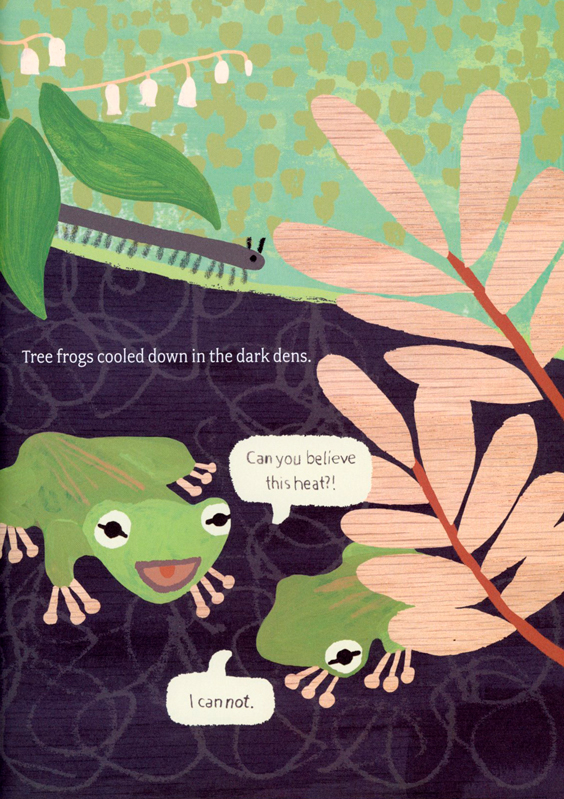
We watch the fallen tree for ten years, one hundred years, five-hundred years, one thousand years. The lives it nourishes, shelters, maintains over the years. I was surprised my a couple of things.
As the tree ages, decomposes, etc. the flora and fauna that find it central to their lives change.
The fact that another tree, quite possibly of the same species, seeds and grows out of the fallen tree is an interesting peripheral tangent we follow.
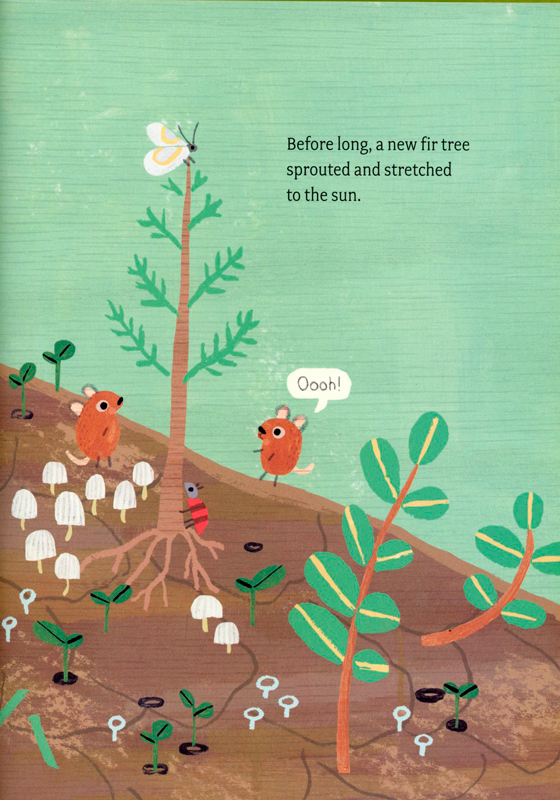
The story is solidified by the circularity of it. We watch generations of animals and plants that depend on the fallen tree comfortably resting on the forest floor. Then we start again.
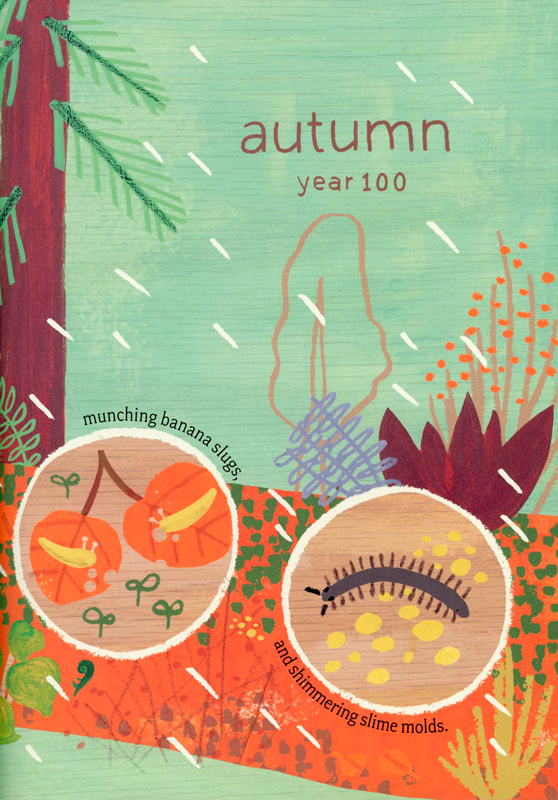
We are entrenched in the robust life the fallen tree attracts. From the variety of fungi and greenery, to all the different creatures that are drawn to it. The animals and plants that depend on the fallen tree to exist from day to day. And the tree that has rooted itself in the fallen tree grows to heights we kind of knew it would, after 100, 500, 1000 years.
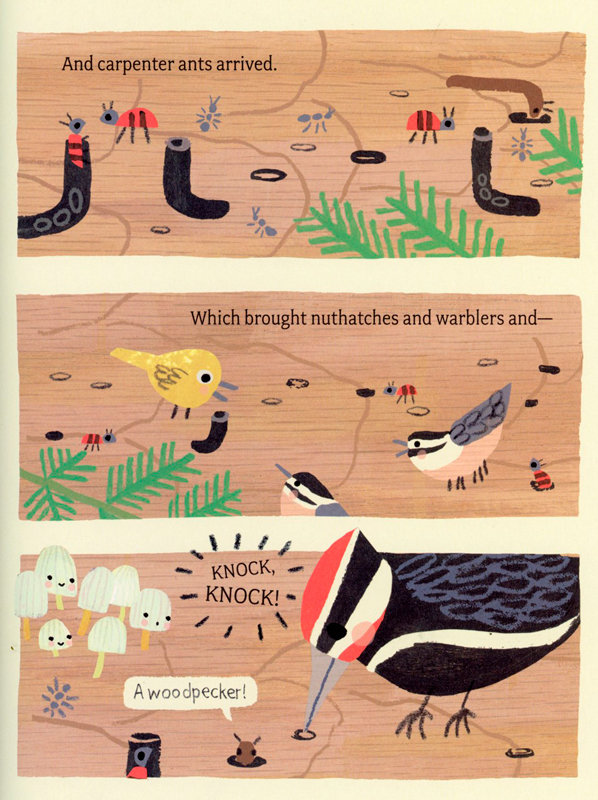
I’ve been a fan of Hevron’s illustration for a number of years now. It is simple and sweet and complicated and serious. This book almost seems a companion piece to her collaboration with Melissa Sweet’s, Tree Hole Homes.
I am enamored with her art in this book. I’ve been picking it up to study ever since I got it. The illustrations are created with acrylic, marker and pencil, and collaged digitally. But that is just the media used. It seems she keeps trying different styles to create one spread. When I first opened the book, I was taken by this spread:
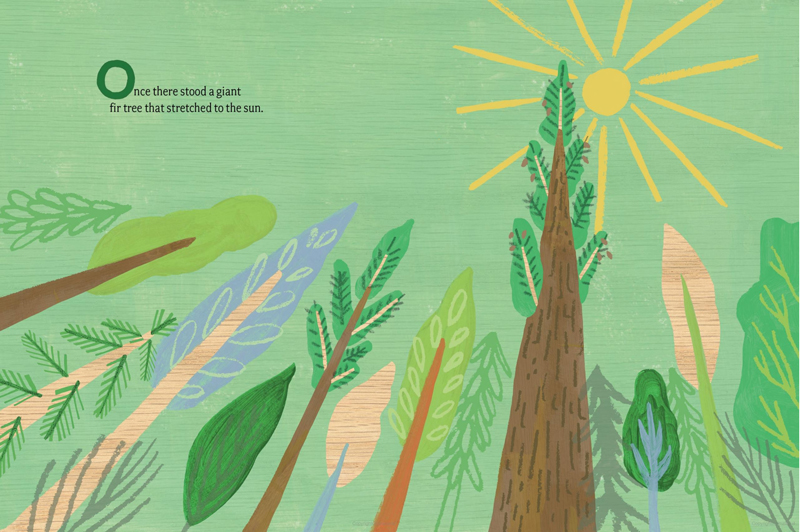
Every tree has its own style… how does she make this work so flawlessly? When I look at her species specific birds, it is not like looking at a field guide, but I would have identified these species without her telling us what they were. I’m no mycologist, but the mushrooms look spot on as well. There is so much to look at on every page. New discoveries with every reading. Every character in this book—the insects, the mammals, the amphibians, the insects, the gastropods, etc.— are full of character. Each one could have its own story.
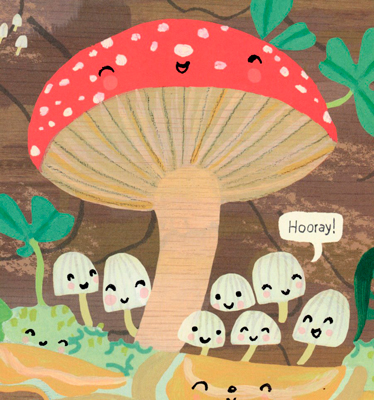
This is a wonderful book about the life of a fallen/nurse tree, peppered with creatures great and small that thrive in that burgeoning environment. Pick it up, marvel at the fantastical, waltz into the magic of the real world. Chuckle a bit (Hevron has a sweet sense of humor), say ‘Wow’ a bit. Learn something new. Be fascinated!

I can’t wait to read this one! What cute mushrooms!
This points to the wonder of nature. I’ve never lost my fascination with how the world is and so I look forward to reading Log Life and other books by Amy. It looks lovely. Thank you.
An engaging way to introduce the big concepts of the life cycle and the interrelationships between living organisms. Love it.l
I recently read this book and agree it’s wonderful! The words and images are engaging, and make an impression.
I love the concept and the art work. Little side stories and comments by the “critters”👍🏼👏🏼
Thanks for sharing this review!! As one who also enjoys birding and exploring the wonders of the natural world around us, I appreciate your comments and look forward to seeing this book!
OH my – what a lovely book – a life and rebirth in 32 pages.
Thank you for introducing me to LOG LIFE. The creative illustrations are amazing.
I requested this picture book from the library.
This looks delightful! Yay!
I love all the little details that are often overlooked!